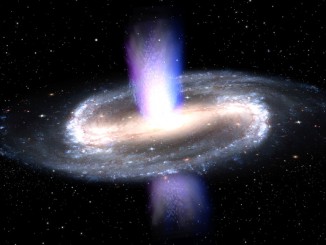
One of the many questions about the formation and evolution of supermassive black holes in the early universe is where did they find the raw material to fuel their enormous growth?
While most, if not all, large galaxies feature such gargantuan black holes in their cores, earlier studies suggested little left-over gas and dust – the presumed “food” needed for a supermassive black hole to develop – after a galaxy’s initial burst of star formation.
But astronomers using the European Southern Observatory’s Very Large Telescope and the sensitive Multi Unit Spectroscope Explorer, or MUSE, instrument may have found an answer.
In a detailed survey of 31 quasars that were already shining some 12.5 billion years ago – less than 900 million years after the Big Bang – the team was able to detect enormous reservoirs of cool, dense hydrogen gas within 100,000 light years of the cores of a dozen sampled quasars.
The video below, provided by the European Southern Observatory (ESO/M. Kornmesser), shows a vast hydrogen gas halo, seen in blue, as imaged by the MUSE instrument. The halo surrounds an earlier image of a galaxy merger obtained with the Atacama Large Millimetre/Submillimetre Array, or ALMA, seen in orange:
“We are now able to demonstrate, for the first time, that primordial galaxies do have enough food in their environments to sustain both the growth of supermassive black holes and vigorous star formation,” said Emanuele Paolo Farina of the Max Planck Institute for Astronomy, lead author of a paper published in The Astrophysical Journal. “This adds a fundamental piece to the puzzle that astronomers are building to picture how cosmic structures formed more than 12 billion years ago.”
While quasars are brilliant beacons in the early universe, the gas reservoirs surrounding them are difficult to observe. But the MUSE instrument is sensitive enough to detect the presence of the gas halos. Farina said MUSE was a “game changer.”
“In a matter of a few hours per target,” he said, “we were able to delve into the surroundings of the most massive and voracious black holes present in the young Universe.”



